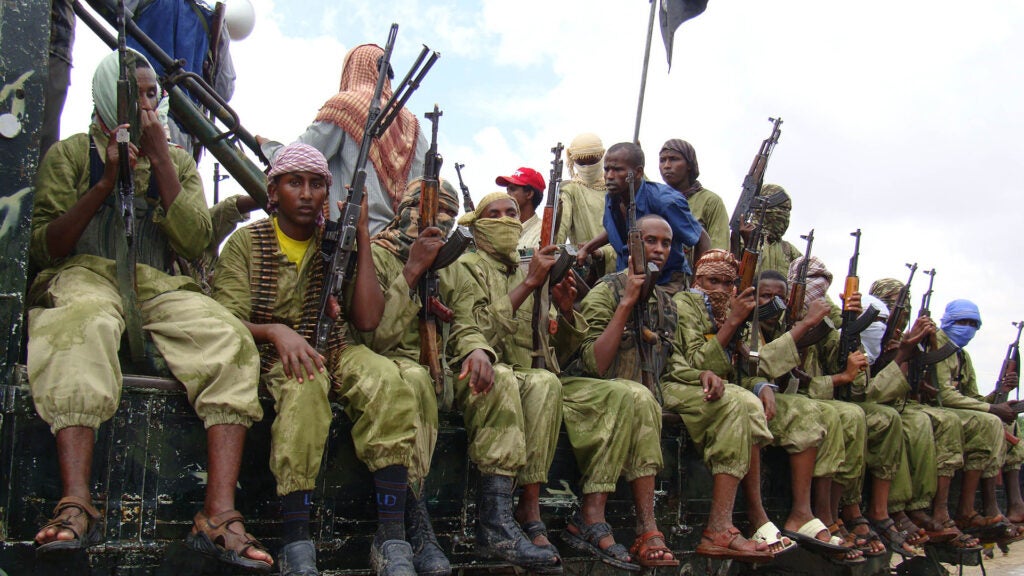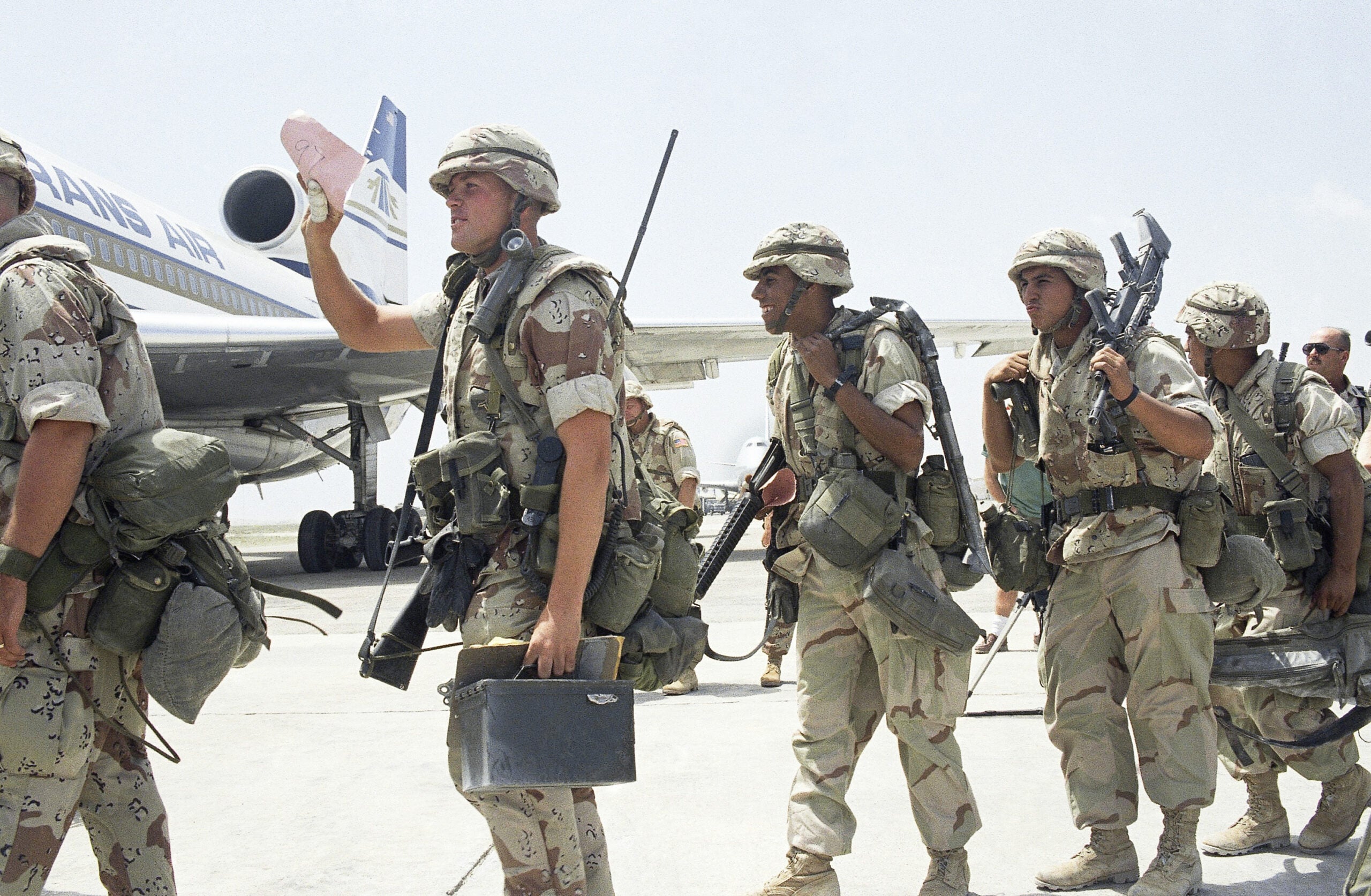Hundreds of U.S. troops returning to Somalia to help local security forces fight the al-Shabab terrorist group, but their mission is not considered a combat deployment, military and senior administration officials said.
Instead, the deployment is “an advise and assist and training mission,” said Army Lt. Col. Patrick Husted, a spokesman for U.S. Africa Command.
“This is a repositioning of forces that are already in the area to continue an advise and assist and training mission, with the purpose of enabling a more effective fight against Al-Shabaab,” Husted told Task & Purpose. “Al-Shabaab continues to conduct attacks in Somalia and are capable of conducting attacks in the region.”
But as the U.S. military’s previous experiences in Somalia and elsewhere on the African continent have shown, any mission can become a combat deployment.
Subscribe to Task & Purpose Today. Get the latest in military news, entertainment, and gear in your inbox daily.
In his final days in office, former President Donald Trump ordered about 750 U.S. service members to withdraw from Somalia, although a small footprint of American troops remained in the country and others would fly into Somalia to train and advise Somali security forces, Brian W. Everstine of Air Force Magazine reported.

But earlier this week, President Joe Biden approved Defense Secretary Lloyd Austin’s request for the U.S. military to reestablish a persistent presence in Somalia to “enable our partners to conduct a more effective fight against al-Shabaab, which is al-Qa‘ida’s largest, wealthiest, and deadliest affiliate,” National Security Council spokeswoman Adrienne Watson said on Monday.
“The decision to reintroduce a persistent presence was made to maximize the safety and effectiveness of our forces and enable them to provide more efficient support to our partners,” Watson said in a statement.
Fewer than 500 U.S. troops will be deploying to Somalia said a senior administration official, who declined to say exactly how many service members will be involved with the mission.
The U.S. troops will train Somali security forces and help “with turning intelligence into operations,” the senior administration official told reporters on Monday.
“That means assisting with how to defend oneself when undertaking especially the more difficult operations, sometimes called the offensive or the clearing operations, but ultimately the operations to try to dislodge Shabab from what is a significant amount of territory that it at least purports to govern and hold,” the official said.

The threat posed by al-Shabab is very real, said Rep. Mike Waltz (R-Fla.), who is also an Army colonel and Special Forces officer.
“Al-Shabab has long declared its loyalty to Al Qaeda, and reporting indicates they fully intend and are developing the capability to conduct external terrorist attacks,” Waltz told Task & Purpose. “I look forward to receiving briefings from the Administration on the operational need to help Somalia contain this threat.”
Pentagon spokesman John Kirby has been adamant that the U.S. military’s mission in Somalia will not involve American troops taking part in combat against al-Shabab.
“Our forces are not now, nor will they be directly engaged in combat operations,” Kirby told reporters on Monday. “The purpose here is to enable a more effective fight against al-Shabab, by local forces.”
Yet the U.S. military’s experience in Somalia also provides a cautionary tale about the dangers of mission creep. When the first U.S. troops were deployed to Somalia in December 1992, they were on a humanitarian mission to help the United Nations distribute food to the starving population. By October 1993, the mission had morphed to include capturing Somali warlord General Mohammed Aidid, leading to the Battle of Mogadishu.
That battle, which was later chronicled in the book Black Hawk Down, resembled the fight for Iwo Jima during World War II, where once again, “Uncommon valor was a common virtue.” Delta snipers, Master Sgt. Gary Gordon and Sfc. Randy Shughart were both posthumously awarded the first Medals of Honor since the Vietnam War for giving their lives to protect Chief Warrant Officer-3 Michael Durant, the pilot of one of the two Black Hawk helicopters that had been shot down. Nearly 30 years later, 60 other Army special operators who took part in the fighting had their awards upgraded to Silver Stars and Distinguished Flying Crosses.

Unfortunately, the warnings from nearly 30 years ago have largely gone unheeded. The U.S. military’s mission to Niger was also not supposed to be a combat deployment, but in October 2017 U.S. troops advising and assisting Nigerien forces were ambushed near the village of Tongo Tongo. Four U.S. soldiers were killed: Sgt. 1st Class Jeremiah Johnson, Sgt. LaDavid Johnson, Staff Sgt. Bryan Black, and Staff Sgt. Dustin Wright.
An ABC documentary later detailed how U.S. military leaders told the families of the fallen that their loved ones had gone on a rogue mission to capture a commander with the Islamic State group, when in fact the team had been ordered to track the commander even though they did not have any support from another Special Forces operational detachment.
More recently, Army Spc. Henry Mayfield Jr. and American defense contractors Dustin Harrison and Bruce Triplett were killed in January 2020 when al-Shabab fighters attacked U.S. troops at Manda Bay, Kenya.
An investigation later found that U.S. military officials had failed to appreciate potential threats to Manda Bay and the base’s defense plans had been inadequate at the time of the attack.
Army Gen. Stephen Townsend, head of Africa Command, also tacitly acknowledged that the goal posts for the U.S. military’s mission in Kenya had moved over time when he told reporters in March, “There were problems with mission command, including poor unity of command at the tactical level and flawed staff processes that failed to account for the growth of CSL (Cooperative Security Location) Manda Bay from a training base to a counter-terrorism support and air base.”
The latest on Task & Purpose
Want to write for Task & Purpose? Click here. Or check out the latest stories on our homepage.
